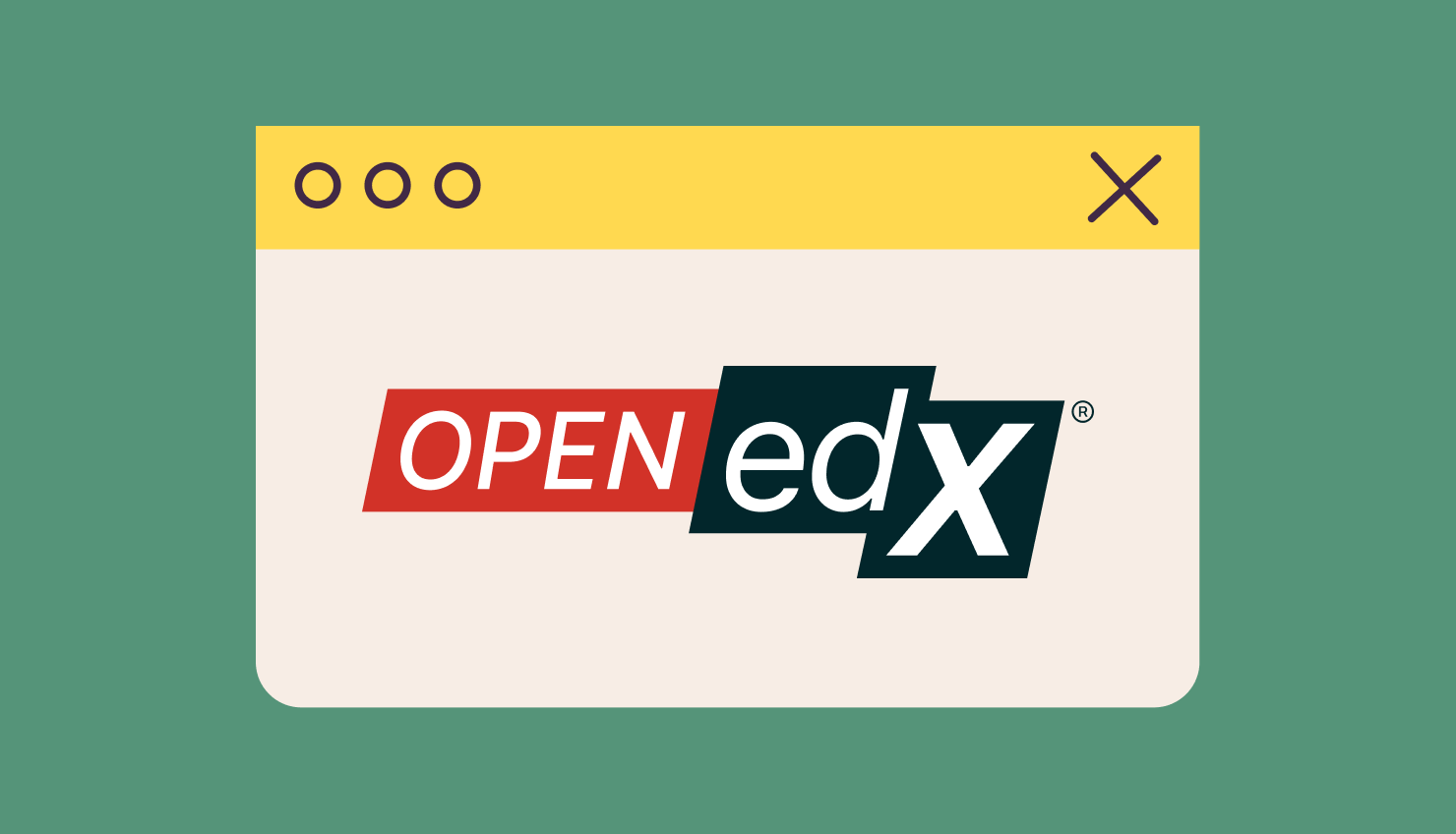Unstoppable technological progress has led to the fact that every year, more and more teachers and educational institutions are transferring their training courses online, and this is not surprising since this form of training offers many advantages:
-
Learning flexibility
-
Personalized experience
-
Interactivity
-
Variable assessment
-
Cost-effectiveness
Open edX is the leading online course creation platform with over 19 million users thanks to its openness, cross-platform nature, and comprehensive set of features.
Preparations
Let’s assume you have a proven tutorial and want to transfer it online using Open edX. The first step is to decide on the format of the course. Open edX offers three options to choose from:
-
Read and Click. This training format is the easiest to create. However, with the ease of creation comes the narrow focus of such courses. This format is suitable only for the most basic learning when students have to read and click through the educational material and pass simple tests or assignments to check their learning progress.
-
Interactive Learning. This format offers interactivity, and students can master new material using various text, audio, and video materials. Most modern courses use this format due to broader delivery and better student engagement.
-
Simulation. The last type and, at the same time, the most advanced. The arsenal of such courses contains many interactive learning tools such as two-way sessions, discussions, game elements, and leaderboards. The creation of such courses is quite a complex process. However, the engagement you get from your students is not comparable to any other format.
Once you have decided on the course format, you need to pick the right tools that will be used to create the course. Open edX has many tools in its arsenal to transform all familiar face-to-face learning paths into online courses. They are all listed in the table below.
Open Edx tools
| Face-to-face type of work | Open edX Tools |
| Lectures | Google Slides and PowerPoint presentations |
| In-class discussions | Online discussion forums |
| Group work | Group wikis |
| Exams | Online assessments |
| Peer assignment grading | Online response grading |
| Study sessions | Digital handouts and fact sheets |
| Hands-on work | Interactive online tutorials |
| Worksheets | Interactive LMS lessons |
How to Use Open edX?
Once all preparations are set and done, it’s time to move on to course creation. When developing courses on the Open edX platform, you can choose one of three paths:
-
Turn to Open edX service provider. This option is the most straightforward and most reliable since you do not need to worry about the various technical nuances of creating a course. The open edX service provider takes care of the development and launch of the course, thereby saving you time.
-
Assemble your development team. This creation method is one of the most difficult because you need to assemble a team (developers, designers, content creation experts), renting an office, salaries for employees, and much more. In return for high costs, you get maximum freedom to control the course development process.
So, you have decided how you will create your online course. Now, let’s move on to the most exciting part of our “how to use Open edX” guide. The course development consists of five consecutive steps worth discussing in more detail.
Step #1. Create an “About” Section
Competition with other courses will be one of your most significant obstacles to success. The modern learner is lost in the abundance of courses on the same topics, and even if your course covers the same topic as dozens of others, you must provide the user with a unique proposal. That’s what the ‘About Page’ section is for.
This page is the face of your course and helps to explain to students what your course is about briefly. The Open edX LMS offers all the necessary fields to fill out and allows you to describe the online course in text format, attach a short video preview, and also describe, point by point, what specific topics students expect. Also, users can see ratings and testimonials of those who have already completed the course to decide whether they should enroll in your online course or not.
Step #2. Content Creation
When you start building an online course in Open edX, you will use various content blocks to shuffle, making the learning process more varied and engaging.
There are four main content blocks in the platform’s arsenal:
-
Tasks and problems. The name speaks for itself. This block is used to create various test tasks, and you are free to choose from more than 20 types of problems and questions, ranging from simple tests with one answer option to tasks requiring a detailed answer. You can also set a time limit for solving a problem and identify problems that affect the course’s final grade.
-
HTML. This tool requires certain technical skills; however, you can create custom blocks using HTML to test your students’ knowledge if you are tech-savvy enough.
-
Discussions. If your curriculum requires interaction and communication between students, you can create discussions right inside the platform. Often, they will be in the form of a chat where students can discuss various topics of the course in real-time. You can also make the discussion a meaningful part of the final assessment.
-
Videos. Sometimes text and pictures are not enough to fully master the topic, and in such cases, video materials come to the rescue. Open edX allows you to create different types of videos for your courses, such as live classroom lectures, on-site footage, studio recordings where you speak directly into the camera, and many more.
Step #3. Defining Grading Policy
Without grades, users will not understand how well they have mastered the material, so the next step in creating a course is to define the grading system. The Open edX platform gives you complete freedom to express your grading policy. You can set the test pass or failure ranges for each part of the course yourself. Besides, it is possible to analyze in detail the students’ results through a convenient toolbar, and for each assessed element, you can choose a deadline.
Step #4. Course Delivery
Well, you’ve done a hard job creating the course, and now it’s time to roll it live. Open edX has three delivery options for course delivery, and you are free to choose one based on your vision and needs.
-
Synchronous. This option is a relatively standard form of education, and we all came across it at schools or universities. Training is fully carried out under the teacher’s supervision. The interaction of students and the teacher occurs in real-time, and all tasks have specific deadlines for completion and assessment.
-
Asynchronous. This method is the opposite of the previous one. The student himself determines when to complete assignments and study the material. Asynchronous learning does not have specific dates for the start and end of the course. Communication between teacher and student occurs with some delay through forums, e-mail, etc.
-
Hybrid. As the name implies, this method combines the previous two characteristics and has recently become more popular. Such courses can incorporate the interactivity of synchronous learning, the flexibility of asynchronous learning, and the most advanced courses can add practical face-to-face tasks.
Step #5. Support and Feedback-Based Revision
Here we are at the final stage of our “how to use Open edX” guide. Your course is up and running and is benefiting your students. However, you must be open to user feedback in the future. It’s not enough to create the online course and give it to users. You should constantly monitor student feedback and make deliberate edits based on feedback, which will keep your course up to date and deliver a top-notch learning experience.
Over time, refresh your course, add new grading methods, assignments, and more. Do not forget to update outdated information so that your online course will remain relevant for new students after a while.
Wrapping Up
As you can see, Open edX is a compelling platform that allows transforming classrooms quickly into convenient online courses. Open edX’s wide range of tools and flexibility make it the number 1 platform in the online learning market.
We talked about using Open edX and transforming formal training into a modern online course. However, if you still have questions about the platform or a course that needs to be transferred online, we are happy to help you. Raccoon Gang is an Open edX service provider with years of experience with the Open edX platform. Contact us, tell us about your project, and our managers will develop the best solution for your needs.




